The outdoor light junction box is an electrical box to protect and route wiring for outdoor lighting fixtures.
Without a junction box, the system would not function properly. There are a variety of junction boxes on the market.
You are watching: Outdoor Light Junction Box: Everything You Need to Know
This article overviews outdoor light junction boxes and details the many junction boxes available.
By understanding more about outdoor light junction boxes, you can choose the right type for your needs and ensure that your outdoor lighting system functions properly.
What is a Junction Box for Lighting?
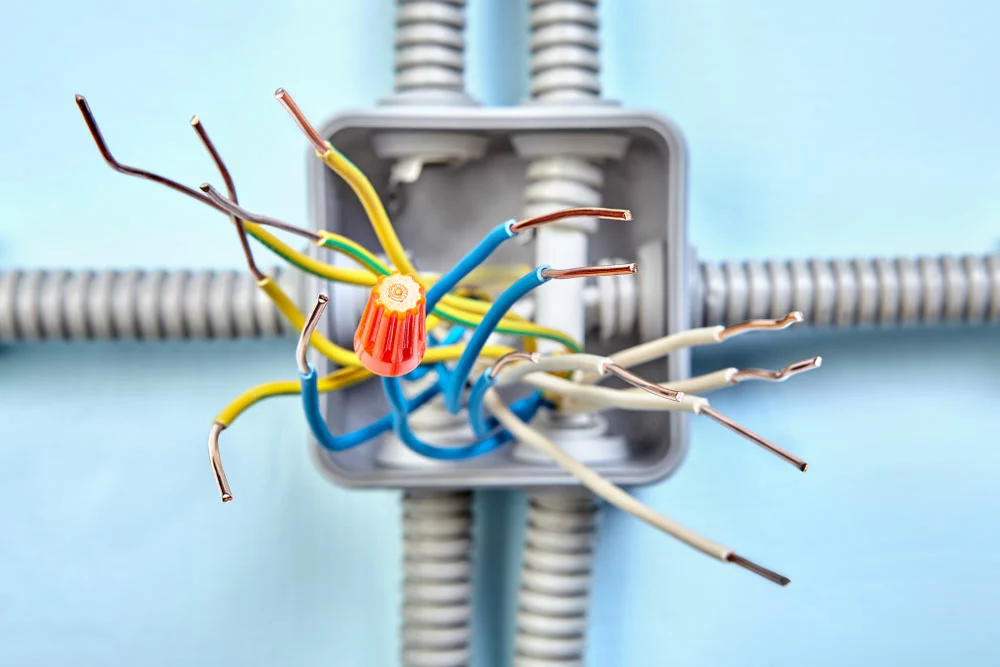
Junction box wiring diagram
A junction box is an electrical wiring device that serves as a safe, convenient point of connection for electrical circuits.
Junction boxes are usually durable plastic or metal and contain multiple terminal points where individual wires connect.
Outdoor light junction boxes are weatherproof and designed for use in wet locations.
Types of Electrical Boxes
Electrical boxes come in different shapes and sizes, each fulfilling a unique purpose. The following are some of the most common types of electrical boxes:
1. Plastic and Metal Electrical Boxes: When utilizing a metal conduit to transmit electrical wiring to the electrical box, metal-sheathed cables require a metal box.
An electrical box made of plastic is used when the electrical conduit cannot be constructed out of metal.
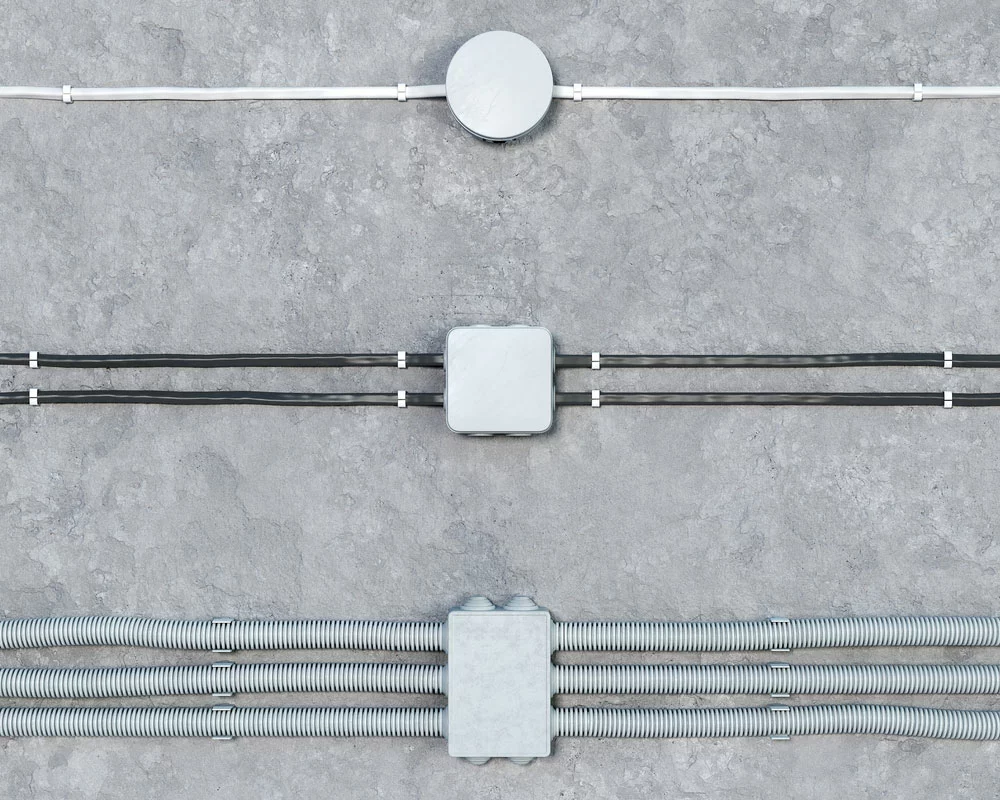
Different types of junction boxes on a concrete wall
2. Standard Rectangular Boxes: “Single-gang” or “one-gang” boxes, more commonly known as standard rectangular boxes, are often for switches controlling a single light fixture or outlet receptacles.
3. 2-Gang, 3-Gang, and 4-Gang Boxes: These boxes hold multiple light switches or outlet receptacles. For example, a 4-gang box controls 4 light fixtures.
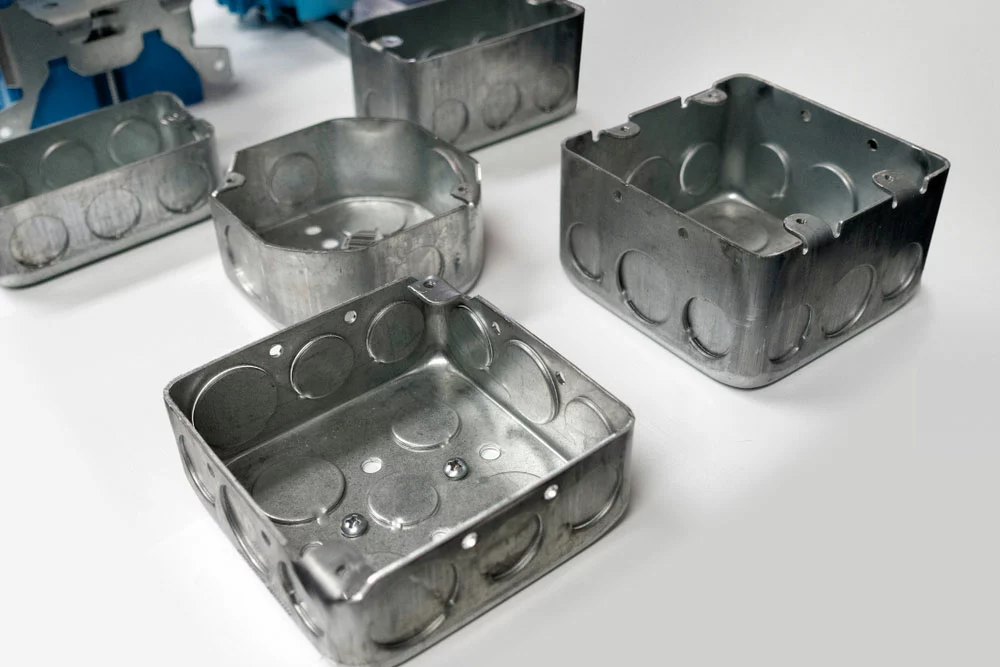
Electrical Conduits & Electrical Boxes Ceiling
Read more : Which Wood Glue to Use When
4. Round Pan Electrical Boxes: Shallow, circular round pan options are most commonly for ceiling- or wall-mounted light fixtures that weigh 50 pounds or less.
They average an inch or less in-depth, can be either plastic or metal, and come in various colors.
5. Octagon Boxes: These 8-sided electrical boxes are deeper than a standard rectangular box and are for light switches or outlet receptacles that require more space, such as GFCI outlets.
6. Junction Box: A junction box is simply an electrical box that contains wiring connections.
Use this box to connect two sections of the wiring not currently connected or extend the wiring to a new location.
Is a Junction Box a Necessity for Outdoor Lights?
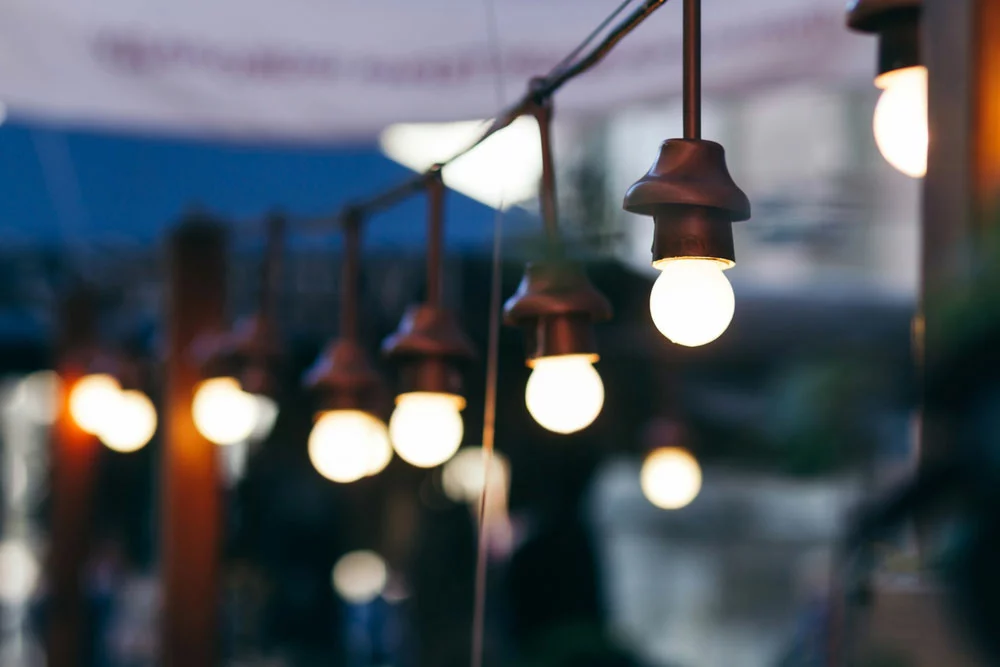
Bulbs without a junction box
You don’t need a junction box for all outdoor light fixtures.
You can screw in incandescent and LED bulbs directly into the power outlet – no junction box needed.
However, some light fixtures, such as those with metal halide bulbs, require a junction box due to the high wattage of the bulbs.
What is the Best Way to Connect an Outdoor Lighting Junction Box?
Depending on the construction details of your home, you’ll need to install one differently. Most structures are constructed of wood, while others are built of brick.
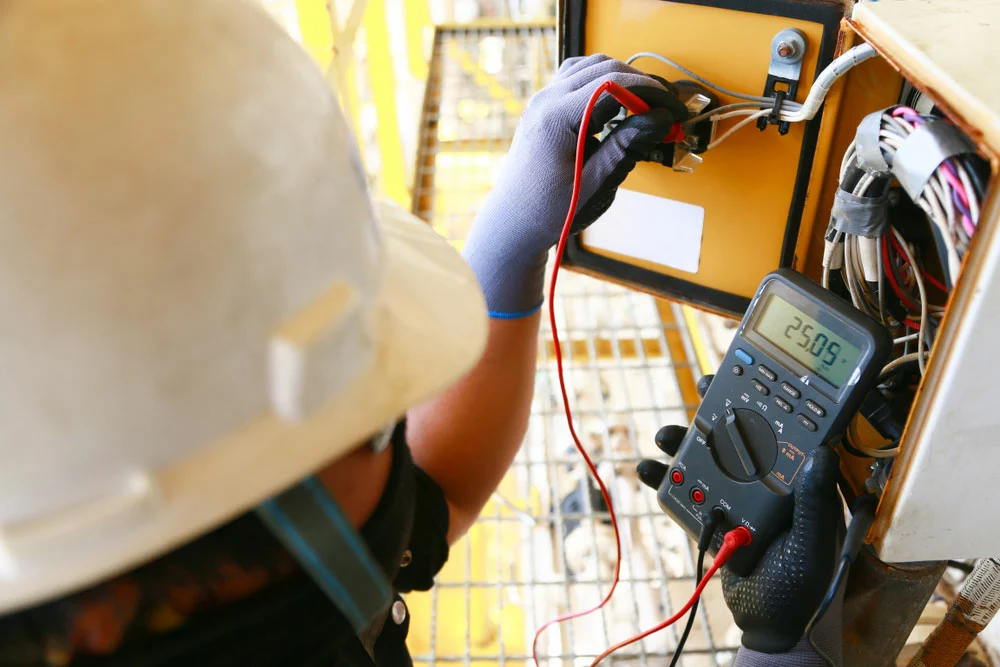
Junction box installation
If you’re using wood, you’ll need to find a stud in the exterior wall where you want to install the junction box. Once you’ve found the stud, use a drill to create a pilot hole.
Then, use a screwdriver to drive the screws that come with the junction box into the pilot hole.
If you’re working with brick, use a masonry drill bit to make a pilot hole. After you’ve drilled the pilot hole, drive the screws that come with the junction box into it using a hammer.
Feed the individual wires through the junction box and install the light fixture over it after it’s in place.
What to Consider When You’re Not Using a Junction Box?
If you choose not to use a junction box, there are a few things you need to keep in mind.
Read more : The Most Common (and Some Uncommon) Wedding Dress Codes Explained
Ensure the light fixture you’re using is rated for direct connection to the power source and that it doesn’t require a junction box.
Use the appropriate size and type of wire for the light fixture.

Waterproof Electrical conduit pipes
Most importantly, the neutral wire connections should be well-protected from water damage, contact with humans and animals, and other potential risks.
Investing in waterproof electrical connections and heat shrink tubing can help to make your wire connections last longer, no matter the weather.
You can take additional measures beyond the abovementioned methods to further protect your outdoor wiring and connections.
For example, you can use a white wire guard to protect your wiring from chewing animals or install your light fixtures in a difficult location for humans and animals to reach.
FAQ
Do All Lights Require a Junction Box?
Some light fixtures require junction boxes, while others don’t. Artificial lights don’t require them for a few reasons. Recessed lighting cans, fluorescents, and certain types of track lighting are examples of this.
When installing one of these fixtures, it is acceptable to feed the electrical wire straight into the terminal box, make connections and screw the box closed.
Metal vs. Plastic Junction Boxes: How Do I Choose a Junction Box?
The choice of material for the electrical box will not affect function.
However, some factors that could help you decide between metal or plastic include budget, durability, and the level of protection you need for your light fixture.
If money is no object, a metal junction box will be the best choice as it offers the highest durability and protection.
How Do You Install a Floodlight Without a Junction Box?
If installing a floodlight without a junction box, ensure the light fixture is rated for direct connection to the electrical power source.
Ensure the light fixture is securely fastened to the wall using the correct size and type of ground wire.
Summary
Outdoor light junction boxes provide a safe and secure way to connect outdoor light fixtures to the electrical grid.
They are especially important for high-wattage light fixtures, such as those used in floodlighting.
Source: https://gardencourte.com
Categories: Outdoor


